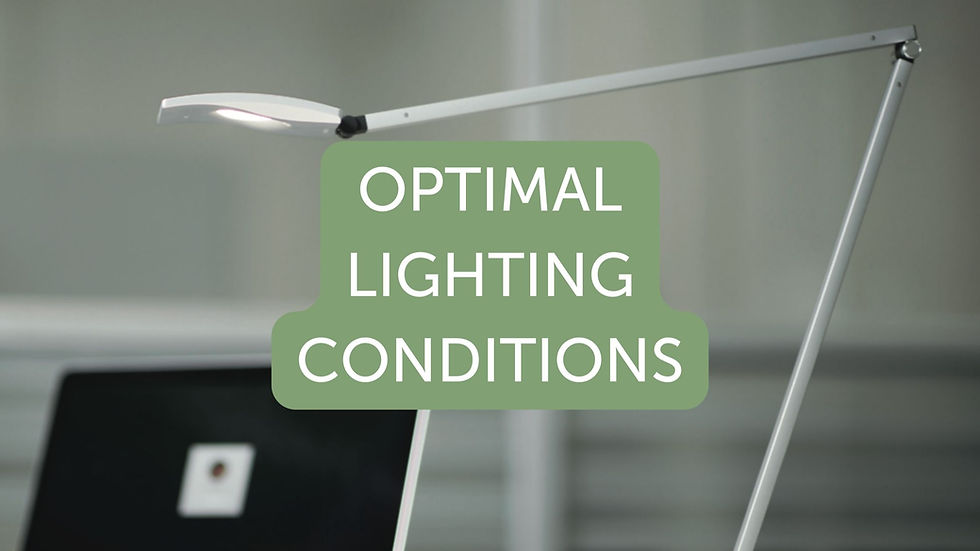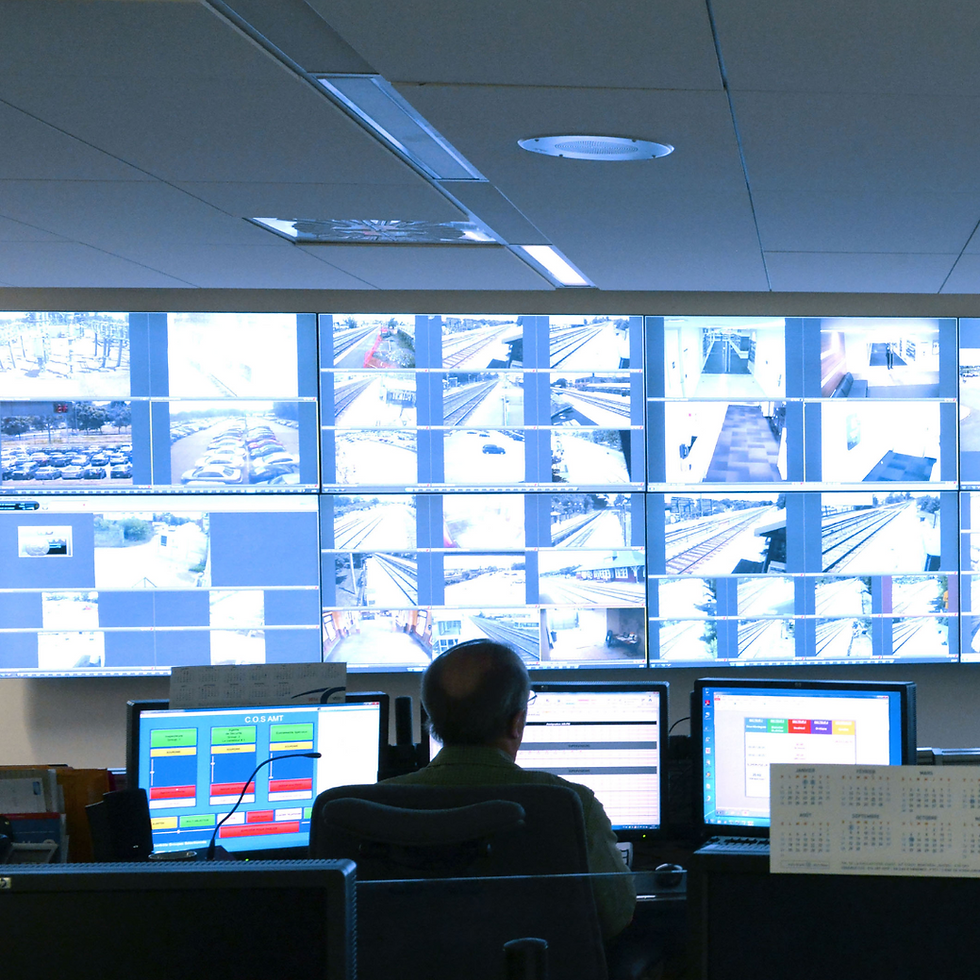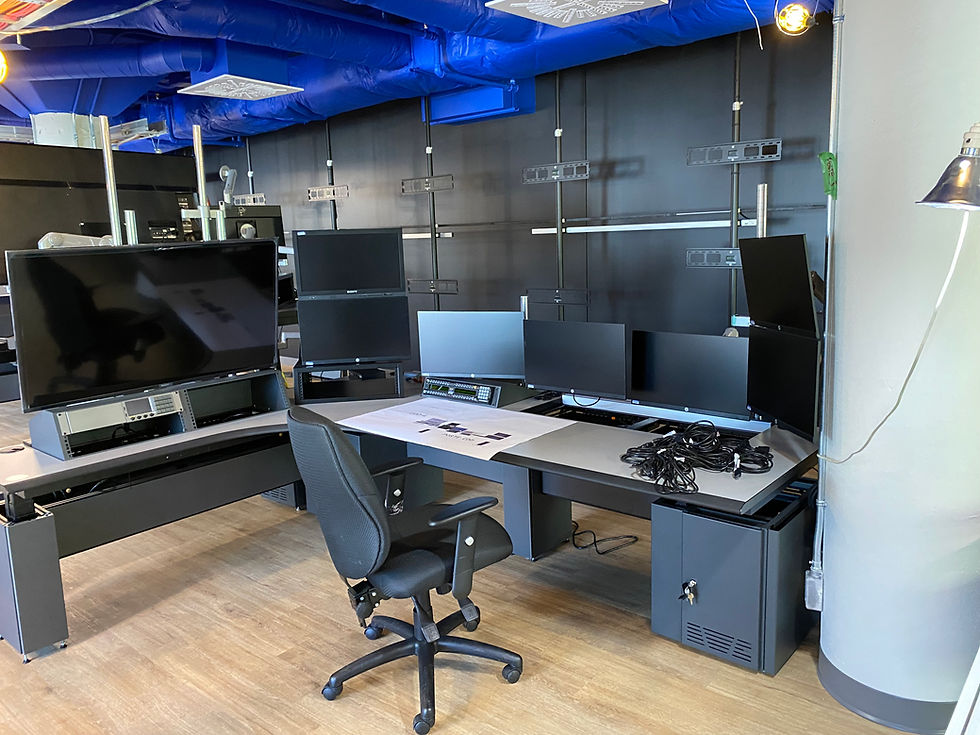A Comprehensive Guide to Optimal Lighting Conditions in the Control Center
- Axel Trujillo
- May 26, 2023
- 5 min read
Updated: May 29, 2023

In the high-stakes environment of control centers, where critical decisions are made and lives are impacted, the significance of optimal lighting conditions cannot be overstated. Lighting plays a crucial role in shaping the well-being, alertness, and performance of dispatchers who tirelessly operate in these 24/7 workspaces. By understanding the interplay between lighting and human physiology, we can unlock insights that empower us to create control center environments that foster productivity, resilience, and mental well-being. In this article, we explore the fascinating world of control center lighting, examining the connection between lighting and circadian rhythms, the role of lighting in reducing eye strain, and how thoughtful lighting design can elevate console operators' experiences. Join us on this illuminating journey as we shed light on the path to enhanced control center ergonomics.
Understanding the Impact of Lighting on the human body
The human body operates on a natural cycle known as the circadian rhythm, which regulates our sleep-wake patterns and influences various physiological processes. Control center operators, who often work extended shifts and irregular hours, are particularly susceptible to disruptions in their circadian rhythms. Lighting plays a vital role in regulating these internal body clocks and promoting optimal alertness and performance.
Research has shown that exposure to bright, blue-rich light during the day can enhance alertness and cognitive function, while warmer, dimmer light in the evening promotes relaxation and prepares the body for sleep.
The careful management of lighting intensity and color temperature can help prevent excessive fatigue and the associated negative effects on cognitive performance. By providing an optimal lighting environment that takes into consideration the circadian rhythms of console operators, control centers can promote sustained attention, reduce errors, and enhance operational efficiency.
Alleviating Eye Strain with Thoughtful Lighting Design
Control center operators, including 911 dispatchers, are often required to monitor multiple screens and maintain constant visual focus for extended periods. This demanding task can put significant strain on their eyes, leading to discomfort, fatigue, and even long-term vision problems. However, with the right lighting design, control centers can mitigate eye strain and create a more comfortable and productive work environment.

A transit operator works diligently with their console and a video wall.
One key aspect of lighting design that can help reduce eye strain is proper task lighting. Adequate illumination of workstations and control panels ensures that dispatchers can read information clearly without straining their eyes. Adjustable task lights with dimming capabilities allow operators to customize the lighting level to their specific needs, minimizing glare and optimizing visual comfort.
Another consideration is the use of indirect lighting to provide uniform illumination across the control center. Indirect lighting fixtures, such as recessed ceiling lights or wall washers, distribute light evenly throughout the space, reducing the contrast between bright screens and dark surroundings. This helps alleviate eye fatigue by creating a more balanced visual environment and reducing the strain caused by constant shifts in brightness.
Integrating Ergonomics and Lighting for Operator Well-being
Creating a control center environment that promotes operator well-being goes beyond lighting design alone. Ergonomics plays a crucial role in ensuring the comfort, health, and productivity of control center operators. By integrating ergonomic principles with thoughtful lighting design, control centers can create a holistic approach to support their operators.
Proper ergonomic design focuses on optimizing the physical layout of control center workstations, including console placement, monitor positioning, and adjustability of furniture. When combined with appropriate lighting, ergonomic considerations can further enhance operator comfort and reduce the risk of musculoskeletal disorders and fatigue.

An ergonomic control console should allow operators to adjust the height and tilt of their monitors to minimize glare and maintain a neutral viewing angle. This helps prevent eye strain and neck discomfort, particularly during long hours of continuous monitoring. Additionally, control center operators should have access to adjustable task chairs that provide proper lumbar support and encourage good posture.
Moreover, implementing biophilic design elements in control center environments can positively impact operator well-being. Natural elements, such as plants or views of the outdoors, have been shown to improve focus, reduce stress, and enhance productivity. Integrating these elements, along with proper lighting, creates a more pleasant and visually appealing work environment for control center operators.
The Role of Ergonomic Control Room Furniture in Enhancing Lighting Design
Ergonomic control room furniture plays a crucial role in enhancing the effectiveness of lighting design in control centers. It provides the foundation for operators to work comfortably and efficiently, complementing the benefits of well-designed lighting solutions. Let's explore the key aspects of ergonomic control room furniture that contribute to operator well-being and lighting optimization.
1. Adjustable Workstations: Ergonomic control room furniture offers height-adjustable workstations, allowing operators to find their optimal seated or standing position. This flexibility promotes good posture, reduces the risk of discomfort, and enables operators to align their line of sight with monitors and lighting sources effectively.

2. Cable Management: Effective cable management is vital for both ergonomic and lighting purposes. Well-designed control room furniture incorporates cable management solutions to keep cables organized, preventing clutter and ensuring that lighting fixtures are unobstructed. This helps maintain optimal lighting conditions and reduces the risk of accidents or damage caused by tangled cables.

3. Customizable Configurations: Ergonomic control room furniture is often modular and customizable to fit the unique needs of each control center. This allows for optimal placement of lighting fixtures, control panels, and monitors, ensuring that lighting is evenly distributed across workstations. Customizable configurations also facilitate efficient collaboration and information sharing among operators.
4. Task Chairs with Ergonomic Features: Operator chairs are a critical component of ergonomic control room furniture. They should offer ergonomic features such as adjustable height, lumbar support, and cushioning to promote comfortable seating during long hours of operation. Additionally, chairs with breathable and moisture-wicking materials contribute to operator comfort, reducing distractions caused by discomfort.

5. Durability and Longevity: Ergonomic control room furniture is designed to withstand the demands of 24/7 operations. High-quality materials and construction ensure durability, minimizing the need for frequent replacements. This reliability extends to lighting fixtures, ensuring consistent and effective lighting over an extended period.
City of Springfield Emergency Communications Center.
In conclusion, the impact of lighting conditions in control centers cannot be underestimated. By understanding the impact of lighting design choices on the human body, control centers can implement effective lighting solutions that prioritize operator well-being, performance, and overall efficiency. Through the integration of lighting design principles, ergonomic control room furniture, and advanced technologies, control centers can create an environment that fosters optimal working conditions for operators, leading to improved productivity and enhanced decision-making. As technology and industry demands continue to evolve, it is crucial to stay informed about the latest advancements in lighting design and ergonomic solutions to continually enhance the control center environment.
We are on social!
Learn of the latest trends in 911 dispatcher centers by following us on social media. We publish daily about the latest design trends in specialized furniture, how you can apply ergonomics for a human centered workplace and offer exclusive insights into our design and manufacturing process.









Comments